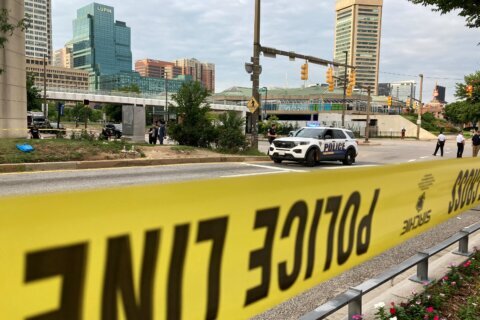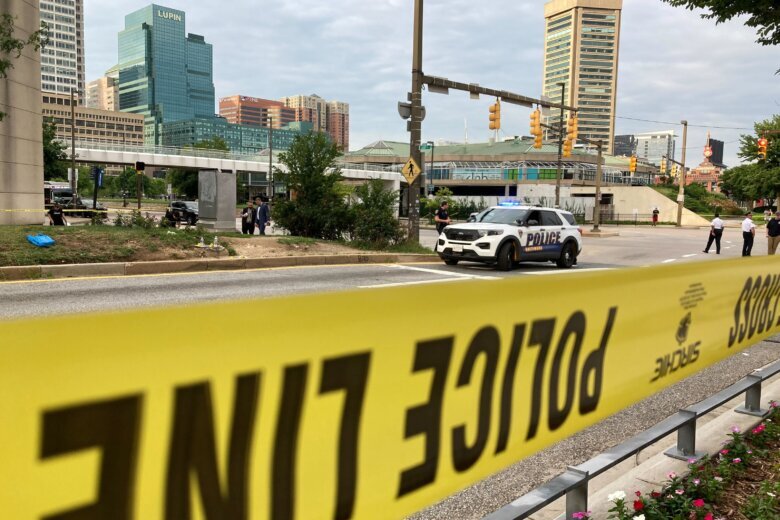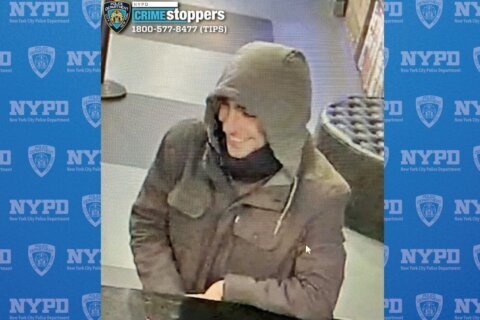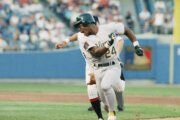
BALTIMORE (AP) — Following a weeklong criminal trial rife with racial and political overtones, a Baltimore teenager was found guilty Thursday of voluntary manslaughter in the deadly shooting of a baseball bat-wielding driver who approached youths washing windshields at a busy downtown intersection last summer.
Throughout the trial, defense attorneys tried to assign responsibility to Timothy Reynolds, who armed himself with a metal bat and confronted the group of windshield washers near the city’s Inner Harbor during rush hour. Reynolds, 48, was shot five times, including three gunshot wounds to his back.
“I would submit to you that Mr. Reynolds was the author of his own death,” defense attorney J. Wyndal Gordon said during closing arguments Monday.
The defense repeatedly highlighted the differences in size and maturity between the victim, a white man weighing over 300 pounds (135 kilograms), and the African American defendant, a high school student who turned 15 the day after the shooting. He stood trial in adult court, but The Associated Press is withholding his name because he’s a minor.
Prosecutor Cynthia Banks argued the defendant was old enough to retrieve a handgun, conceal his face behind a mask, pull the trigger and flee the scene.
Being “14 is not a free pass to murder,” she told the jury, which started deliberations after lunch Monday and reached a verdict late Thursday morning.
The high-profile tragedy reignited longstanding debate last year about Baltimore’s squeegee workers, mostly Black teens from disadvantaged backgrounds. City leaders have since banned the practice at certain high-traffic intersections and stepped up efforts to connect squeegee workers with more legitimate job opportunities.
“We’re talking about kids,” attorney Warren Brown said during closing arguments Monday, saying police and prosecutors were painting all squeegee workers with the same broad brush. He said most don’t live in neighborhoods where they could mow lawns or pick up other odd jobs.
“They’re just out there making some money … but it irritated this man,” he said.
The prosecution’s case included surveillance and dashcam video that captured parts of the interaction, but it remains unclear why Reynolds hastily parked his SUV, leaving it running with the radio blasting, and marched across roughly 10 lanes of traffic. Neither the video footage nor witness accounts revealed what words he exchanged with the squeegee workers.
Under Maryland law, voluntary manslaughter applies to an intentional killing that occurs under partially mitigating circumstances, including self-defense or defense of others.
During cross-examination last week in Baltimore Circuit Court, defense attorneys pressed Baltimore police detectives on why they didn’t try harder to determine Reynolds’ motive for approaching the group.
The attorneys repeatedly raised questions about whether Reynolds harbored negative feelings about squeegee workers, who have become a familiar — and polarizing — presence in a highly segregated city where poverty, gun violence and other hardships are heavily concentrated in communities of color. To some, the downtown windshield washers are hard-working entrepreneurs facing Baltimore’s most deep-seated social challenges, while others consider them a nuisance and public safety hazard.
Defense attorneys tried to introduce as evidence a 2019 Tweet from an account linked to Reynolds complaining about a squeegee worker. The judge excluded it because of authentication issues, according to the attorneys.
Reynolds’ blood alcohol content was 0.03 at the time of his death, well below the legal limit to drive, according to an autopsy report.
An engineer and father of three, Reynolds grew up in the Baltimore area and was an avid fan of the city’s major league sports teams. He lived with his family in Baltimore’s Hampden neighborhood, a relatively affluent area north of downtown. Several of his relatives sat through the entirety of the criminal trial, sometimes clasping each other’s hands and wiping away tears.
“The truth about Mr. Reynolds is so important to this family,” their attorney Thiru Vignarajah said during brief remarks outside the courthouse Thursday afternoon. “He was a son of Baltimore. He loved this city.”
While casting doubt on whether police and prosecutors had accurately identified their client as the shooter, defense attorneys alternatively told jurors to consider a self-defense claim. Reynolds’ baseball bat could be considered a deadly weapon, and his actions placed the squeegee workers in imminent danger, they argued.
Gordon said the shooter fired only after Reynolds swung the bat. It was unclear from court testimony whether Reynolds injured any of the squeegee workers.
Regardless, the shooter had ample opportunities to retreat, prosecutor Banks said. Instead, he broke away from the group twice in the moments leading up to the shooting, she said: once to retrieve a crossbody bag containing the gun and later to pull a mask over his face.
“He knew full well what he was going to do,” Banks said, arguing his actions constituted first-degree murder, which requires premeditation.
Furthermore, Reynolds didn’t pose a continued threat because he had already been struck in the head by a rock and started walking away, Banks argued. The medical examiner who performed Reynolds’ autopsy testified he had a deep gash on his head.
“He let it go,” Banks said.
The defendant was arrested after Baltimore police officer Kevin Rivera recognized him from surveillance photos. Rivera said he often interacted with the teen, who was a frequent presence washing windshields downtown, and the prosecution played bodycam video of them having a casual conversation just days before the shooting.
In court last week, Rivera pointed to the defendant and identified him as the suspected shooter. He was the only witness to make a positive identification.
After the verdict, attorney Brown said he will request that sentencing take place in juvenile court, which could result in more leniency. He also said he plans to appeal an earlier decision to try the case in adult court.
Copyright © 2024 The Associated Press. All rights reserved. This material may not be published, broadcast, written or redistributed.








